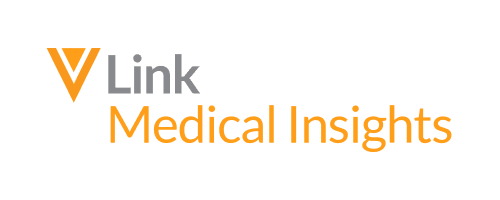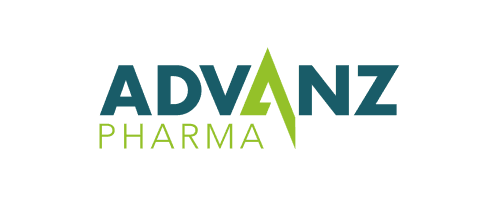BridgeBio: AI Powers Medical Insights Analysis for Faster Launch
“Link Medical Insights has dramatically improved our medical affairs team — our credibility, visibility, and ability to deliver valuable scientific information. It’s a huge shift from the days of sifting through spreadsheets.”
For emerging biotechs, a successful launch can hinge on quickly capturing and acting on market signals to stay ahead of the curve. This makes a streamlined process for managing medical insights absolutely critical. Yet many teams still rely on slow, manual methods. On average, only 10% of insights are actually leveraged, and it takes up to three months for captured insights to reach decision-makers.


So how can a biotech preparing for launch modernize its medical insights strategy and gain a competitive edge? I recently connected with Kristina Kipp, regional medical director at BridgeBio, to explore how her organization has redefined its approach to medical insights. Driven by a recent launch, Kipp and her team are transforming their processes to quickly leverage all insights, ensuring timely capture, analysis, and action.
Isabella Kredlow: From your perspective, what role do medical insights play in supporting a successful launch?
Kristina Kipp: One of the core responsibilities of medical affairs is to engage with key opinion leaders (KOLs), obtain valuable, actionable insights and surface them to leadership. As we prepare for launch, these insights become especially valuable — helping to shape medical strategy, refine scientific communication, and guide overall impact in the field. It’s critical during launch to act quickly. Depending on the information we collect, insights can lead to immediate changes, even same-day adjustments to our scientific communications.
IK: How were you capturing medical insights in the past and what challenges did you face with that approach?
KK: When I previously worked at a large biopharma company, the solution in place for managing medical insights was both limited and highly manual. It required navigating multiple tagging trees and countless drop-down menus, with only basic AI summarization. Free-text entries offered minimal editing capabilities without checks for spelling, abbreviations, adverse events, non-compliant language, or overly lengthy descriptions. When I joined BridgeBio about a year and a half ago, we were building the organization’s first medical affairs team. That meant we had to make foundational decisions about platforms and processes, including how to manage medical insights. We first relied on a spreadsheet, and it quickly became clear how inefficient that was. With so many columns and entries, identifying patterns or pulling trends together was incredibly cumbersome. I manually scrolled through each insight, often lost track of what insights I had already read, and filtering was nearly impossible. The approach was time consuming and it was clear that we needed a dedicated solution in place before launch.
IK: Now that you are using Link Medical Insights to capture and analyze insights, how is it informing your launch strategy?
KK: We are in a critical phase for our organization. We meet with executive leadership regularly, and in the days ahead of those meetings, we run and review reports in Link Medical Insights. We also use its AI-generated summaries that give us a clear picture of emerging trends. The visibility and speed we’ve gained have been invaluable. For example, we recently adjusted medical materials for an upcoming congress — a shift driven by insights and competitor intelligence gathered in Link Medical Insights.
IK: How has Link Medical Insights helped your organization from an analysis standpoint?
KK: With the visibility provided by Link Medical Insights from information gathered by our medical science liaisons (MSLs) in the field, we identified that a competitor was using a sub-analysis we also had — but hadn’t been leveraging. The impact of that single insight was immediate: leadership took notice, KOLs responded positively to the data, and we revised our medical materials.
Also, because we’re a smaller organization, we move fast. Within a moment’s notice, I might get a request asking for all insights related to a competitor over the past two months. With Link Medical Insights, I quickly run a targeted search, explore related concepts, pull reports, and either share the raw insights or generate an AI-powered summary. I immediately know whether we have six insights or 25, and can quickly and confidently report back.
Link Medical Insights has dramatically improved our medical affairs team — our credibility, visibility, and ability to deliver valuable scientific information. It’s a huge shift from the days of sifting through spreadsheets.
IK: What else has your organization implemented to ensure that your medical insights strategy is a success?
KK: When we began to rethink the medical insights process, a key focus was not only how we’d gather insights, but also how we’d ensure they reached the right people across all functions in the organization. Often, MSLs invest time and effort gathering valuable insights, only for them to sit unused. We were determined to avoid that, especially with our first drug launch, where every insight counts. So, we built a structured, intentional process. When we generate AI summaries and run regular reports in Link Medical Insights, we know they will be delivered to the right stakeholders. The feedback has been overwhelmingly positive from MSLs, who now see their insights presented, utilized, and driving impact in the field.
Learn more about accelerating medical insights in your organization.
More Customer Stories
Explore and learn more
Read Customer Story
Novo Nordisk: Streamlining the Medical Insights Process

Watch Video
How Medical Insights Drive Strategic Launch Decisions

Read Customer Story
ADVANZ PHARMA Enables Field Medical Teams to Have Enhanced Scientific Engagements with Link Key People


